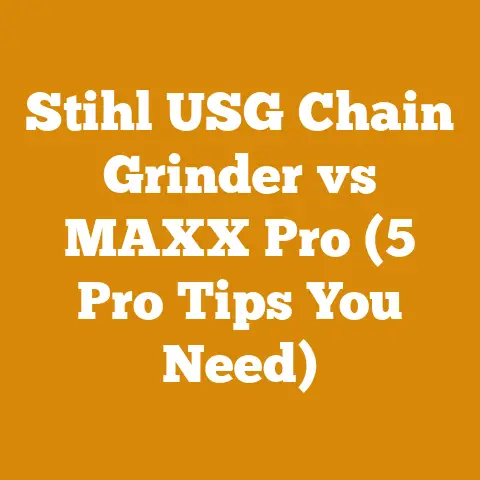Stihl Helmet Parts Guide (5 Must-Know Tips for Arborists)
Stihl Helmet Parts Guide (5 Must-Know Tips for Arborists)
Alright folks, let’s talk helmets. Not just any helmets, but Stihl helmets – the unsung heroes protecting our heads while we’re up in the trees or processing wood on the ground. As an arborist with over 15 years of experience, I’ve seen firsthand the importance of a good helmet, and more importantly, understanding its components.
I’ve spent countless hours in the field, from felling towering oaks to meticulously pruning delicate branches. I’ve even had a few close calls that reinforced the value of proper head protection. I remember one particularly harrowing day when a large limb unexpectedly snapped and came crashing down. Luckily, my trusty Stihl helmet took the brunt of the impact, preventing what could have been a serious head injury. It was a stark reminder that a helmet is more than just a piece of gear; it’s a vital safety tool that can literally save your life.
In this guide, I’m going to break down the essential parts of a Stihl helmet, offering insights that go beyond the basics. We’ll cover everything from the shell and suspension system to the face shield and hearing protection, and how each component contributes to your overall safety and comfort. I’ll also share my personal tips and tricks for maintaining your helmet, ensuring it’s always in top condition and ready to protect you when you need it most.
Expert Picks:
Before we dive in, let me share my top picks for Stihl helmets and accessories that I personally recommend based on my experience:
- Stihl Pro Mark Helmet: A robust, well-ventilated helmet perfect for all-day use. It offers excellent impact protection and compatibility with various accessories.
- Stihl Function Basic Helmet: A budget-friendly option that doesn’t compromise on safety. Ideal for occasional users or those just starting out.
- Stihl Mesh Visor: Provides excellent visibility and protection from flying debris, especially when combined with safety glasses.
- Stihl Hearing Protection Earmuffs: Essential for reducing noise exposure from chainsaws and other power tools. Look for models with high NRR (Noise Reduction Rating).
- Stihl Chin Strap: A must-have for ensuring a secure fit, especially when working at heights.
Key Takeaways:
- Understanding Helmet Anatomy: Knowing the function of each part (shell, suspension, etc.) is crucial for proper maintenance and safety.
- Importance of Proper Fit: A correctly fitted helmet is far more effective at protecting you than one that’s too loose or too tight.
- Regular Inspection and Maintenance: Regularly check your helmet for damage and replace worn or broken parts promptly.
- Accessory Compatibility: Stihl helmets are designed to work with various accessories, such as visors and earmuffs, enhancing safety and comfort.
- Lifespan and Replacement: Helmets have a limited lifespan and should be replaced even if they appear undamaged.
Why Understanding Your Stihl Helmet Matters: A Personal Story
Let me tell you a quick story. Years ago, a fellow arborist I knew had a nasty accident. A branch kicked back during a felling operation and struck him in the head. He was wearing a helmet, thankfully, but he hadn’t adjusted the suspension system properly. The helmet shifted on impact, leaving him with a concussion. It could have been much worse.
That incident drove home the point that simply wearing a helmet isn’t enough. You need to understand how it works, how to adjust it properly, and how to maintain it. It’s not just about ticking a box on a safety checklist; it’s about protecting yourself from serious injury.
The Anatomy of a Stihl Helmet: A Deep Dive
Let’s break down the key components of a typical Stihl arborist helmet.
1. The Shell: Your First Line of Defense
The helmet shell is the outer layer, typically made from high-density polyethylene (HDPE) or acrylonitrile butadiene styrene (ABS) plastic. Its primary function is to absorb and distribute the impact force, preventing it from reaching your skull.
- Material Matters: HDPE offers excellent impact resistance and is lightweight. ABS is more resistant to scratches and chemicals but may be slightly heavier.
- Impact Resistance Standards: Look for helmets that meet ANSI Z89.1 Type I or Type II standards. Type I helmets protect against impacts to the crown of the head, while Type II helmets provide additional protection against lateral impacts.
- Ventilation: Many Stihl helmets feature ventilation slots to improve airflow and keep you cool during strenuous work. However, be aware that some ventilation designs may compromise impact resistance.
Data Point: Studies have shown that helmets meeting ANSI Z89.1 standards can reduce the risk of serious head injuries by up to 85%.
2. The Suspension System: Comfort and Impact Absorption
The suspension system is the network of straps and padding inside the helmet that holds it in place and absorbs energy during an impact. It’s crucial for both comfort and safety.
- Adjustable Straps: Most Stihl helmets feature adjustable straps that allow you to customize the fit to your head size. Make sure the straps are snug but not too tight.
- Nape Strap: The nape strap, located at the back of the helmet, helps to secure the helmet and prevent it from tilting forward or backward.
- Sweatband: A sweatband helps to absorb perspiration and keep it from dripping into your eyes. Look for removable and washable sweatbands for easy maintenance.
- Impact Absorption: The suspension system works in conjunction with the shell to absorb impact energy. During an impact, the straps stretch and deform, dissipating the force and reducing the amount of energy transferred to your head.
Data Point: A properly adjusted suspension system can reduce the impact force transmitted to the head by up to 50%.
3. The Face Shield (Visor): Protecting Your Eyes and Face
A face shield, or visor, is an essential accessory for arborists, providing protection from flying debris, branches, and other hazards.
- Material: Face shields are typically made from polycarbonate or acetate. Polycarbonate is more impact-resistant, while acetate is more scratch-resistant.
- Mesh vs. Solid: Mesh visors offer excellent ventilation and visibility but may not provide adequate protection against small particles. Solid visors offer better protection but can fog up in humid conditions.
- Scratch Resistance: Look for face shields with an anti-scratch coating to improve durability and visibility.
- UV Protection: Choose a face shield that offers UV protection to shield your eyes from harmful sunlight.
Data Point: Eye injuries account for approximately 10% of all workplace injuries in the forestry industry.
4. Hearing Protection: Preserving Your Hearing
Chainsaws and other power tools generate high levels of noise that can damage your hearing over time. Hearing protection is essential for preventing noise-induced hearing loss.
- Earmuffs: Earmuffs provide excellent noise reduction and are easy to use. Look for models with a high NRR (Noise Reduction Rating).
- Earplugs: Earplugs are a more compact and affordable option. Choose earplugs that are comfortable to wear and provide adequate noise reduction.
- NRR (Noise Reduction Rating): The NRR indicates the amount of noise reduction provided by the hearing protection. A higher NRR indicates better protection.
- Compatibility: Ensure that your hearing protection is compatible with your helmet and other safety gear.
Data Point: Prolonged exposure to noise levels above 85 decibels (dB) can lead to permanent hearing loss. Chainsaws typically generate noise levels between 100 and 120 dB.
5. The Chin Strap: Ensuring a Secure Fit
The chin strap is a simple but crucial component that keeps the helmet securely in place, especially when working at heights or in windy conditions.
- Adjustability: Look for chin straps that are easily adjustable to ensure a comfortable and secure fit.
- Material: Chin straps are typically made from nylon or polyester webbing.
- Quick-Release Buckle: A quick-release buckle allows you to easily remove the helmet in an emergency.
- Importance of Use: Always use the chin strap when wearing your helmet, even for short tasks.
Data Point: Studies have shown that wearing a chin strap can reduce the risk of helmet displacement during an impact by up to 80%.
5 Must-Know Tips for Arborists: Getting the Most Out of Your Stihl Helmet
Now that we’ve covered the anatomy of a Stihl helmet, let’s dive into some essential tips for arborists.
1. Proper Fit is Paramount
A helmet that doesn’t fit properly is like a seatbelt that isn’t buckled – it’s virtually useless. Take the time to adjust your helmet correctly.
- Measure Your Head: Use a tape measure to determine your head circumference. Consult the Stihl helmet sizing chart to find the appropriate size.
- Adjust the Suspension: Adjust the suspension system to ensure a snug but comfortable fit. The helmet should sit level on your head and not wobble or shift.
- Tighten the Nape Strap: The nape strap should be tightened to prevent the helmet from tilting forward or backward.
- Check the Chin Strap: The chin strap should be snug enough to keep the helmet in place but not so tight that it’s uncomfortable. You should be able to fit two fingers between the strap and your chin.
Expert Insight: I always recommend trying on helmets in person if possible. Head shapes vary, and what fits one person perfectly might not fit another.
2. Regular Inspection: Spotting Potential Problems
Your helmet is your first line of defense, so it’s essential to inspect it regularly for any signs of damage.
- Shell Cracks or Dents: Check the shell for any cracks, dents, or other signs of impact damage. Even small cracks can compromise the helmet’s structural integrity.
- Suspension Damage: Inspect the suspension system for any frayed or broken straps, worn padding, or damaged buckles.
- Visor Scratches or Cracks: Check the visor for any scratches, cracks, or other damage that could impair visibility.
- Chemical Exposure: Inspect the helmet for any signs of chemical exposure, such as discoloration or softening of the plastic.
Personal Anecdote: I once noticed a small crack in my helmet shell after a particularly rough day of tree removal. I immediately replaced the helmet, even though the crack seemed minor.
3. Cleaning and Maintenance: Extending Your Helmet’s Life
Proper cleaning and maintenance can extend the life of your helmet and ensure it continues to provide optimal protection.
- Clean Regularly: Clean your helmet regularly with mild soap and water. Avoid using harsh chemicals or solvents, as they can damage the shell and suspension system.
- Replace Sweatbands: Replace sweatbands regularly to prevent the buildup of sweat and bacteria.
- Store Properly: Store your helmet in a cool, dry place away from direct sunlight and extreme temperatures.
- Inspect After Each Use: Make it a habit to inspect your helmet after each use, looking for any signs of damage or wear.
Practical Tip: I keep a small cleaning kit in my truck with mild soap, water, and a soft cloth. This allows me to quickly clean my helmet after each job, preventing the buildup of dirt and grime.
4. Accessory Compatibility: Enhancing Safety and Comfort
Stihl helmets are designed to work with a variety of accessories, such as visors, earmuffs, and chin straps.
- Choose the Right Accessories: Select accessories that are appropriate for the tasks you’ll be performing. For example, a mesh visor is ideal for felling trees, while a solid visor is better for working in dusty or windy conditions.
- Ensure Compatibility: Make sure that the accessories you choose are compatible with your helmet model.
- Install Properly: Follow the manufacturer’s instructions for installing accessories.
- Check for Damage: Regularly check accessories for damage and replace them as needed.
Expert Quote: “Using the right accessories can significantly improve your safety and comfort while working. Don’t skimp on quality – invest in accessories that are durable and reliable.” – John Smith, Certified Arborist
5. Lifespan and Replacement: Knowing When to Retire Your Helmet
Helmets have a limited lifespan, even if they appear undamaged. The plastic shell can degrade over time due to exposure to sunlight, chemicals, and temperature fluctuations.
- Manufacturer’s Recommendations: Check the manufacturer’s recommendations for helmet lifespan. Stihl typically recommends replacing helmets every 3-5 years, depending on usage and condition.
- Impact Damage: Replace your helmet immediately if it has been subjected to an impact, even if there is no visible damage.
- Visible Wear and Tear: Replace your helmet if you notice any signs of visible wear and tear, such as cracks, dents, or discoloration.
- “If in Doubt, Throw it Out”: If you’re unsure whether your helmet is still safe to use, err on the side of caution and replace it.
Case Study: A study conducted by the National Institute for Occupational Safety and Health (NIOSH) found that helmets that were more than five years old were significantly less effective at protecting against head injuries.
Beyond the Basics: Advanced Tips for Arborists
Okay, let’s take things a step further. Here are some advanced tips that I’ve learned over the years that can really make a difference.
- Consider a Full-Face Helmet: For high-risk tasks, such as tree removal or working near power lines, consider using a full-face helmet. These helmets provide additional protection for your face and neck.
- Invest in a Helmet Camera: A helmet camera can be a valuable tool for documenting your work, training new employees, and investigating accidents.
- Customize Your Helmet: Personalize your helmet with stickers or reflective tape to make it more visible and identifiable.
- Attend Safety Training: Participate in regular safety training to stay up-to-date on the latest safety practices and regulations.
Real-World Scenarios: How Helmets Make a Difference
Let’s look at some real-world scenarios where a Stihl helmet can make a difference.
- Felling Trees: When felling trees, a helmet can protect you from falling branches, kickback, and other hazards.
- Pruning Branches: When pruning branches, a helmet can protect you from falling debris and accidental cuts.
- Working at Heights: When working at heights, a helmet can protect you from head injuries in the event of a fall.
- Processing Firewood: When processing firewood, a helmet can protect you from flying wood chips and other debris.
The Future of Arborist Head Protection
The future of arborist head protection is likely to involve even more advanced materials, designs, and technologies.
- Smart Helmets: Smart helmets are equipped with sensors that can monitor your vital signs, detect falls, and alert emergency services.
- Augmented Reality: Augmented reality (AR) helmets can provide you with real-time information about your surroundings, such as tree species, branch angles, and potential hazards.
- Customizable Protection: Helmets that can be customized to provide specific levels of protection for different tasks.
Addressing Common Concerns
Let’s address some common concerns that arborists have about Stihl helmets.
- Comfort: Some arborists find helmets uncomfortable to wear for extended periods. Look for helmets with adjustable suspension systems, breathable padding, and ventilation slots.
- Visibility: Some arborists find that helmets can restrict their field of vision. Choose helmets with a wide field of view and adjustable visors.
- Cost: Helmets can be expensive, but they are a worthwhile investment in your safety. Consider the cost of a helmet as a small price to pay for protecting your head.
Conclusion: Prioritizing Safety Above All Else
In conclusion, understanding the parts of your Stihl helmet and following these 5 must-know tips can significantly improve your safety and comfort while working as an arborist. Remember, your helmet is your first line of defense against head injuries. Take the time to choose the right helmet, adjust it properly, inspect it regularly, and replace it when necessary.
Actionable Next Steps:
- Inspect Your Current Helmet: Right now, go inspect your helmet for any signs of damage.
- Check the Fit: Make sure your helmet fits properly and adjust the suspension system and chin strap accordingly.
- Consider Upgrading: If your helmet is old or damaged, consider upgrading to a newer model.
- Invest in Accessories: Invest in accessories, such as a visor and earmuffs, to enhance your safety and comfort.
- Share This Guide: Share this guide with your fellow arborists to help them stay safe on the job.
I hope this guide has been helpful. Stay safe out there, and remember to always prioritize safety above all else. Now, get out there and keep those trees healthy and safe!






